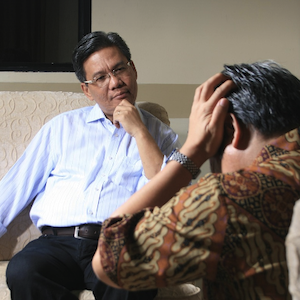A theoretical and clinical perspective of an embodied view in psychotherapy of somatic symptoms disorders

All claims expressed in this article are solely those of the authors and do not necessarily represent those of their affiliated organizations, or those of the publisher, the editors and the reviewers. Any product that may be evaluated in this article or claim that may be made by its manufacturer is not guaranteed or endorsed by the publisher.
Authors
In this paper, we offer some ideas for the treatment of somatoform patients and related pathologies based on the concept of embodiment. Embodiment refers to the interplay between body and mind in behavior. The word refers to giving a body to something, “incarnate”. Spinoza wrote extensively about the topic in the 17th century. In the 20th century, picking up on Spinoza’s work, Damasio presented extensive and important neuro-scientific evidence that feelings can be direct perceptions of internal body states, substantiating the growing understanding of emotions and feelings as a core component of the embodied experience. Here, we summarize the evidence for the intersection of emotion and cognition in the body, which impinges on the effectiveness of using the body and movement in psychotherapy and the management of somatic symptoms and related disorders. We present evidence indicating that movement would be a way to reach unconscious processes dealing with body-mind interaction and body awareness.
How to Cite

This work is licensed under a Creative Commons Attribution-NonCommercial 4.0 International License.






